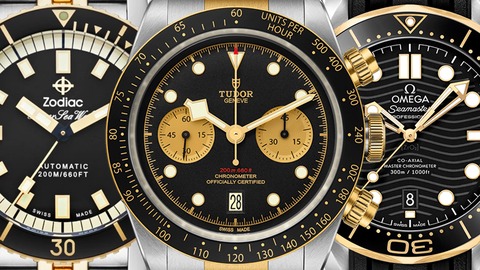Merriam-Webster gives the narrow definition of a diva in the context of opera, but it also says that a "diva" is "one who demands that attention be paid to his or her needs, especially without regard to anyone else's needs or feelings." Whether this is an admirable trait or not, I leave to the reader's conscience – but the idea has certainly given rise to some amazing Bulgari watches with that name, and of the three new Diva watches introduced for LVMH Watch Week, the Diva's Dream Peacock Dischi is the one that best fits the name. If this watch could talk, it would say, "Drop dead."
"Dischi" means "disk" in Italian, and the time, on the Diva's Dream Peacock Dischi, is read off two nested discs decorated with peacock feather marquetry. The inner disk functions as the hour hand, with the hour indicated by a round brilliant-cut diamond, and the outer as the minute hand, with a pear-shaped brilliant-cut diamond as the minutes indicator. The outer and inner bezels are set with brilliant-cut diamonds, with sapphires standing in for the indexes found on more plebian watches. The feather marquetry on the inner dial duplicates the so-called "eye" of a peacock's feather, and the outer ring has a geometric pattern in brilliant blue, which looks like two superimposed six-pointed stars. swiss watch replicas
The self-winding caliber BVL 308.
The level of attention to detail is really mind-blowing – not only are the individual marquetry elements perfectly matched in terms of color, the individual filaments are also properly aligned with the hour and minute markers. Feather marquetry is one of those obscure but wonderful crafts which always seems on the verge of vanishing completely, but which is kept alive by a few obsessive craftspeople who could show any Japanese shokunin artisan a thing or two about single-minded devotion. A person who practices the art is called a plumassière, and the work encompasses not only feather marquetry, but feathers that are more widely used as design elements in fashion as well. In the 1920s, according to The New York Times, there were as many as 500 studios in Paris devoted to the craft; today, there are only a handful left.
The first steps in the process involve selecting feathers suitable for the two parts of the dial. This is similar to the process gem-setters use in horological gem-setting – the feather elements, like the gems, sit directly adjacent to each other and any mismatch in the physical proportions of the feather elements, or in their color and iridescence, will be immediately and glaringly obvious.
A plumassière nowadays works only with feathers from farms. Still, to find perfect matches, you have to go through a lot of feathers – Bulgari says around 500 for each watch. This is another parallel to horological gem-setting – in jewelry making, you can end up discarding some 50% of a stone by cut weight in order to get a good match in shape and physical dimensions, but the loss in high-quality horological gem-setting can be as high as 90%.
The first part of the process involves cleaning the feathers, and then each individual plume is steamed in order to bring back its luster and suppleness.
The feathers are then gently ironed and pressed under individual weights to get them flat enough to lie perfectly flush with each other on the dial. The next step is cutting out each individual element needed for the dial. There's no margin for error; the edges of each element have to match perfectly, and the contours of each newly cut piece are checked against a specially constructed metal template. Then, the elements are placed next to each other on a mock-up dial. Fake Rolex Watches
Finally, the individual elements are assembled into what eventually becomes the completed dial.
I have about as much chance of owning one of these absurdly glorious trinkets as I have of getting to Switzerland from New York by clicking the heels of my Chuck Taylors together, closing my eyes, and saying, "There's no place like Zurich," but I still find them irresistible. The expenditure of so much time, and the amount of training in the craftsperson needed to make that time well-spent, is as aristocratic and old-fashioned an example of luxury as it gets. It has nothing whatsoever to do with logos or celebrity sponsorships or red-carpet placement; this is the stuff that whispers in your ear, "Oh, you want the good stuff? The really good stuff? It costs whatever it costs and it takes as long as it takes."
I'm all for having a little Diva in your life (as long as the whole thing doesn't go all Blue Angel on you). I don't know that I would wear it, but if I had the scratch, there is a non-zero chance I'd buy it just to have it around. Feathers and diamonds together make for a beautiful visual meditation on the ephemeral and the enduring – a surprisingly deep visual experience of the nature of time itself.

コメント